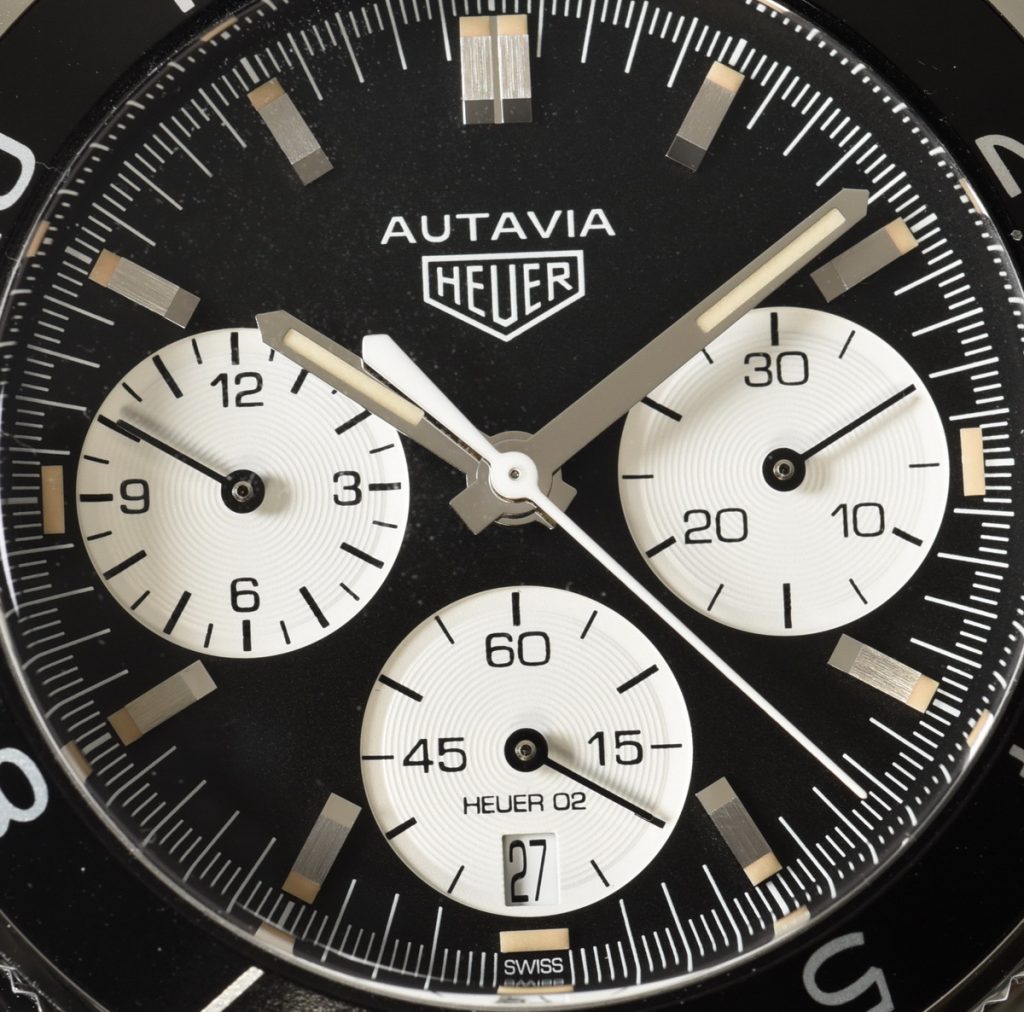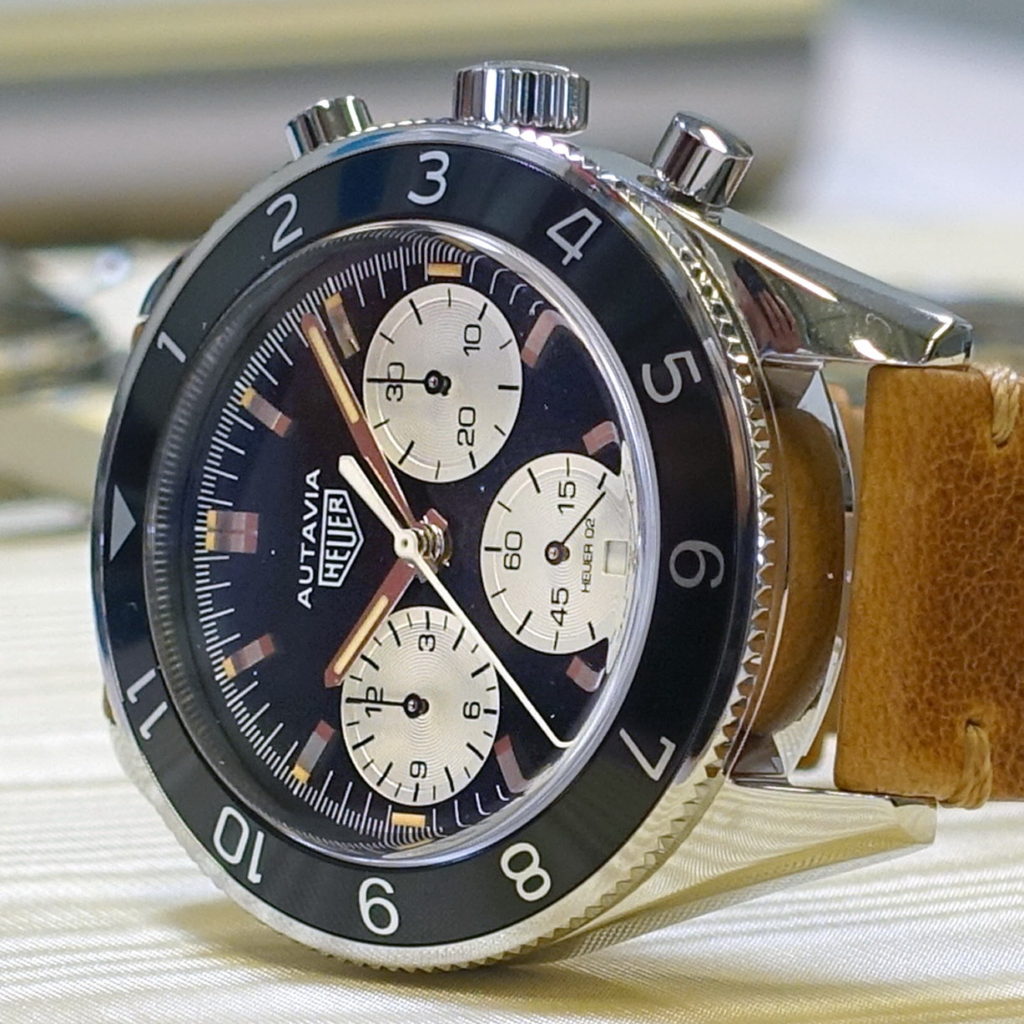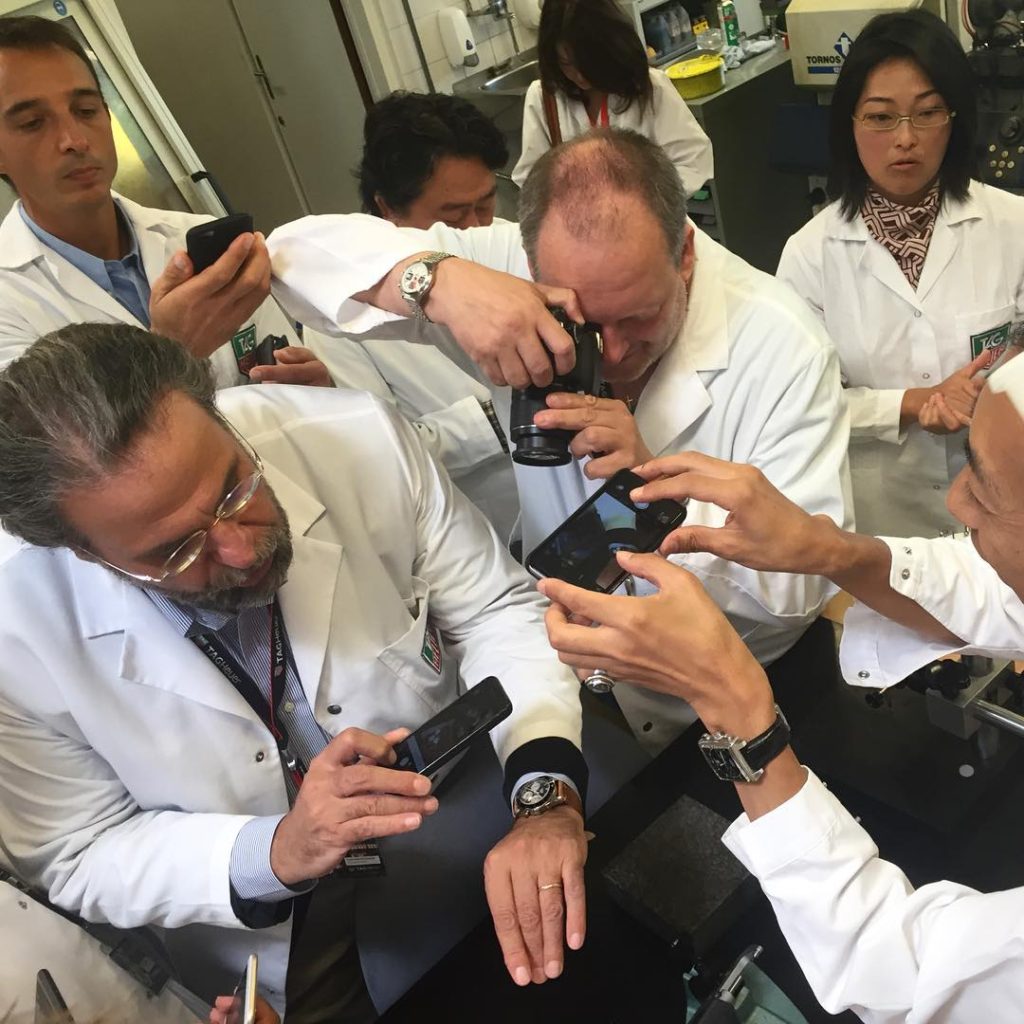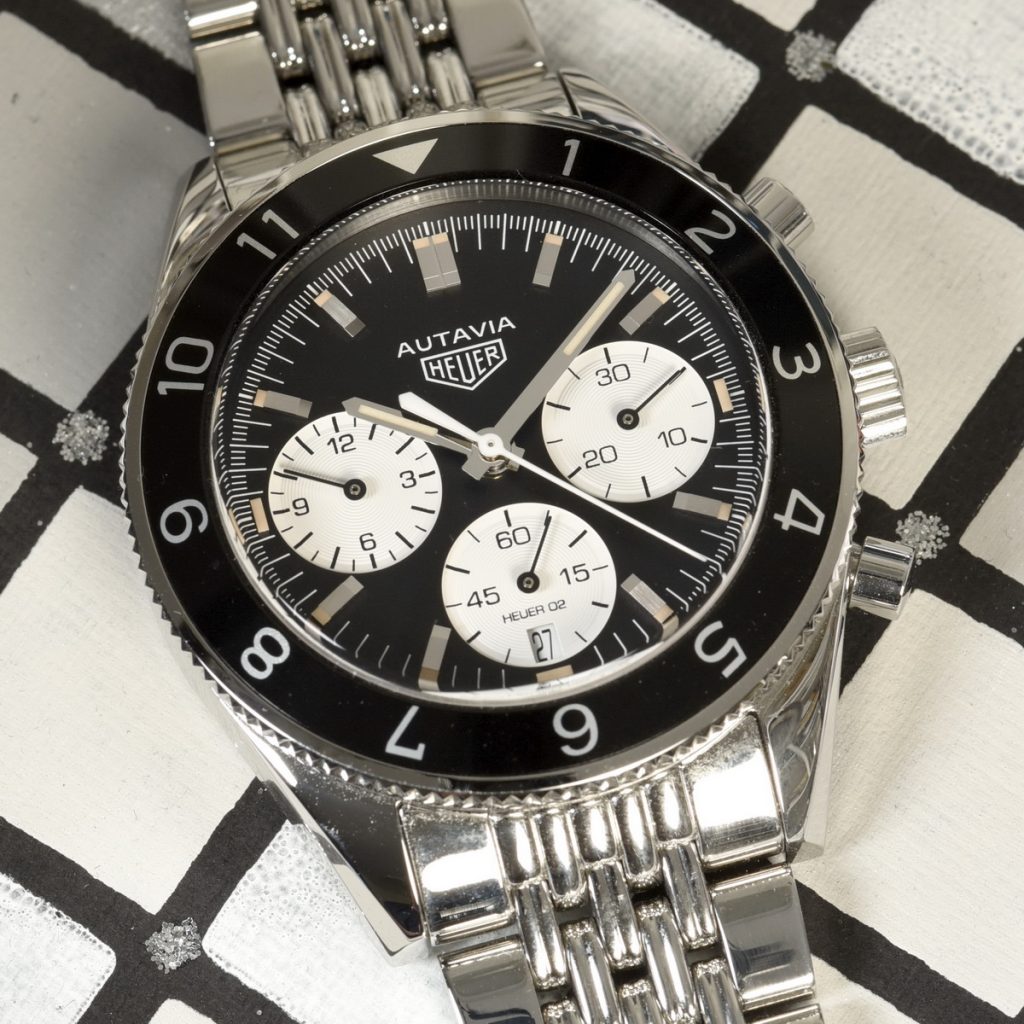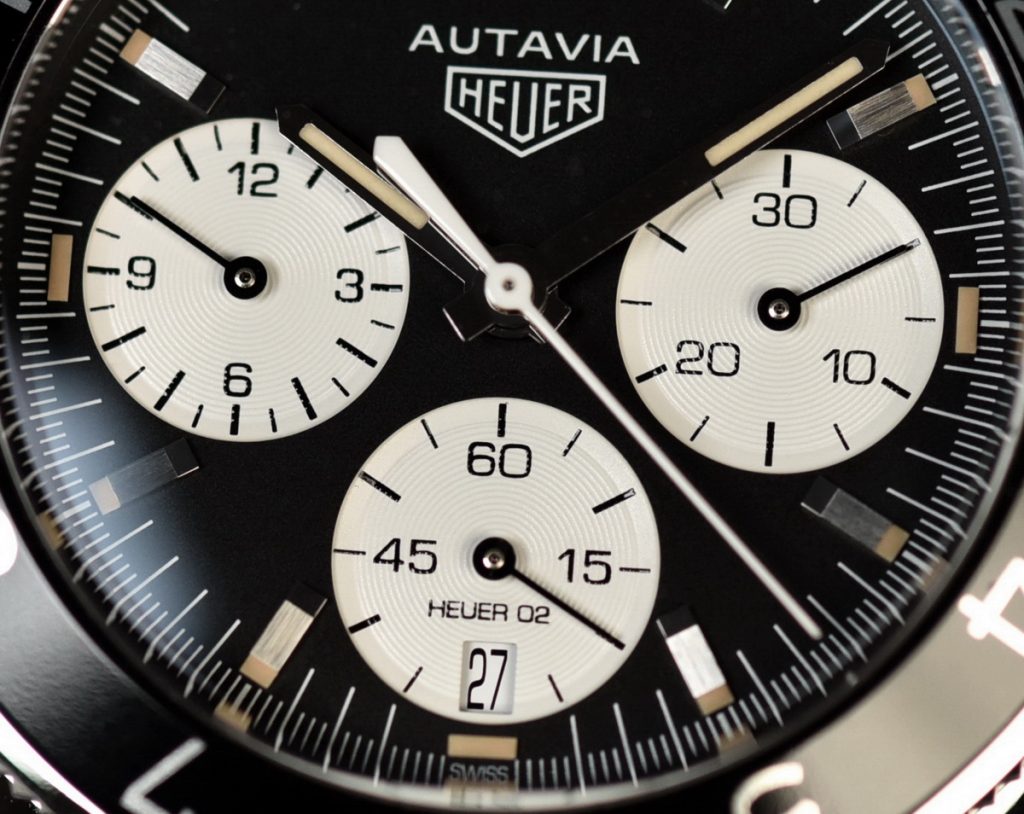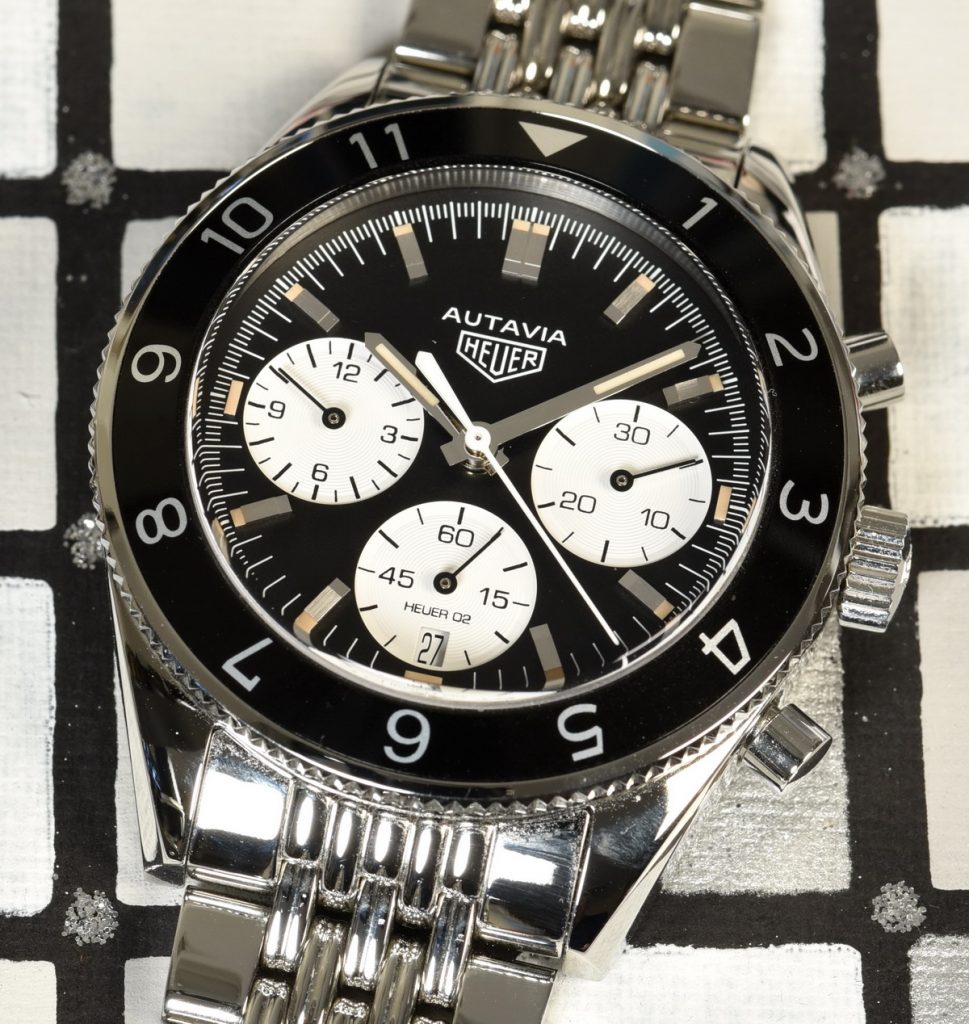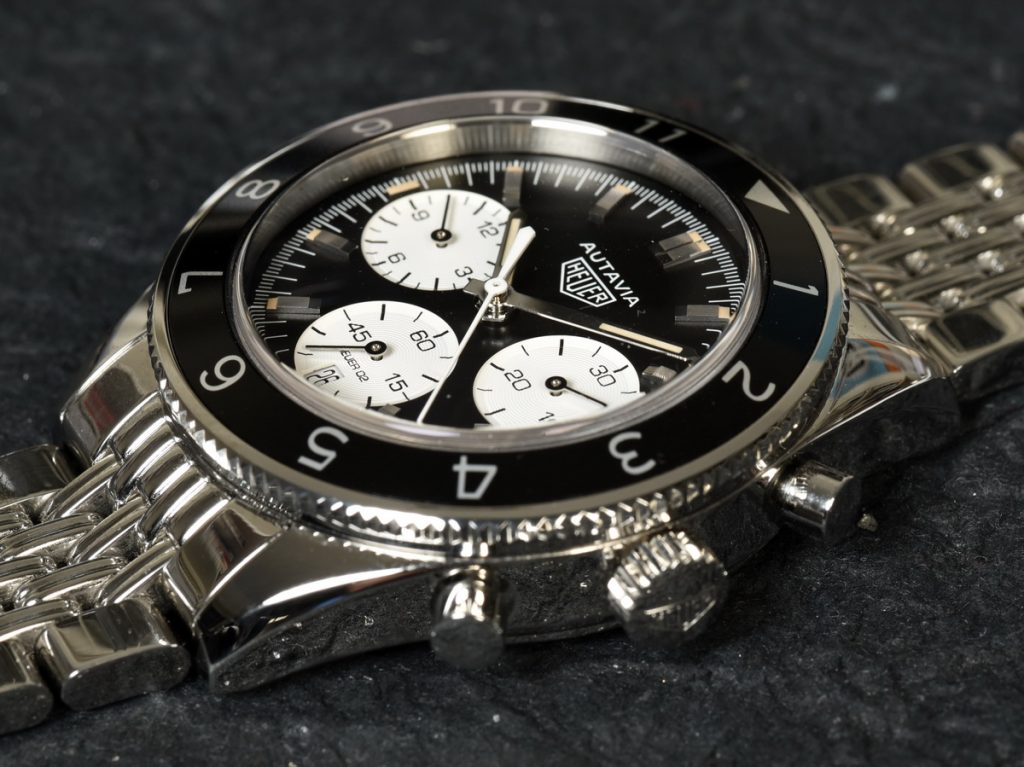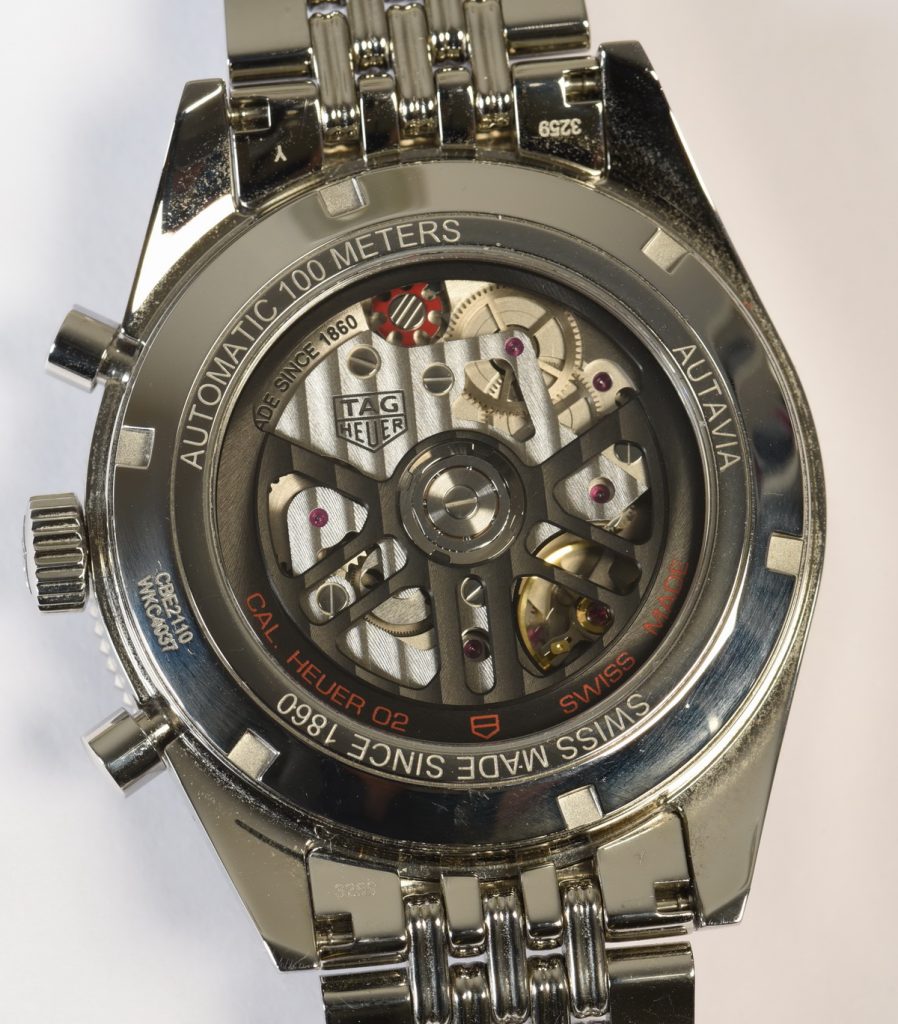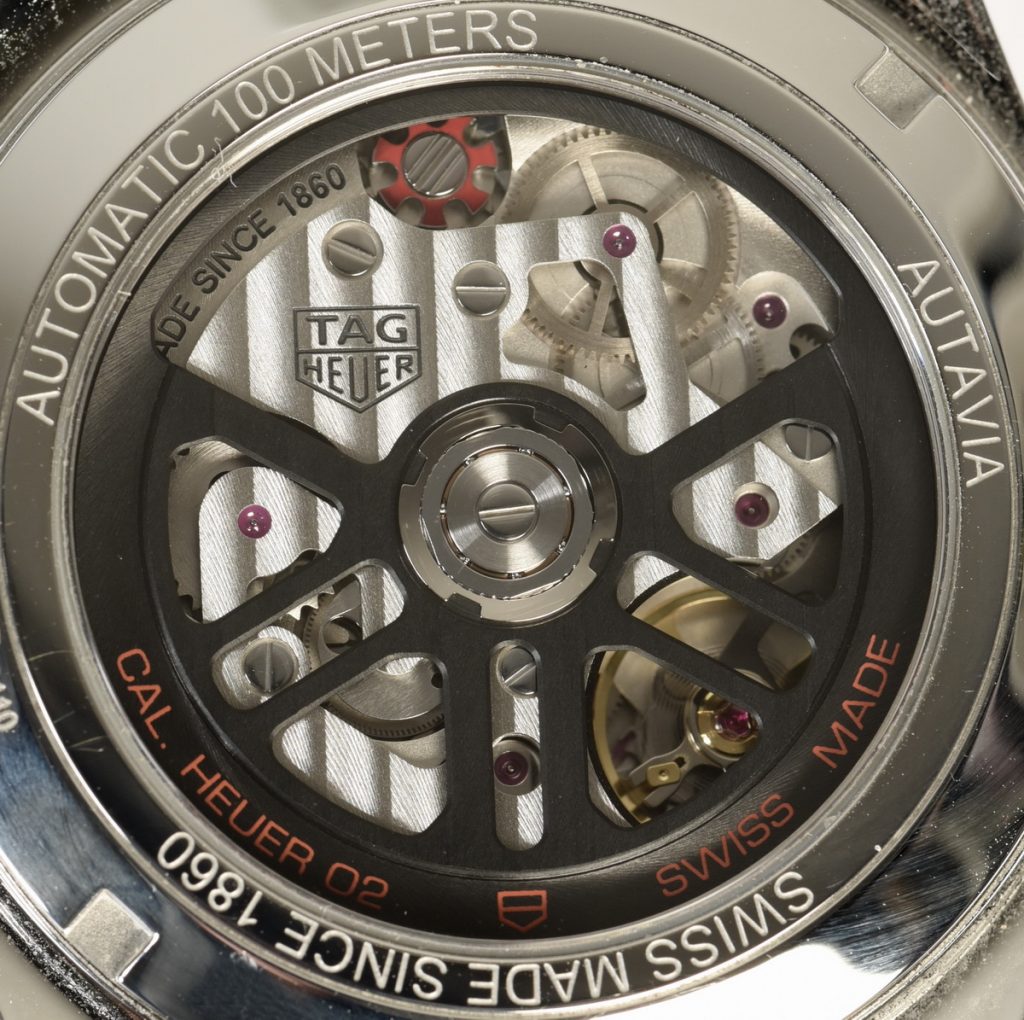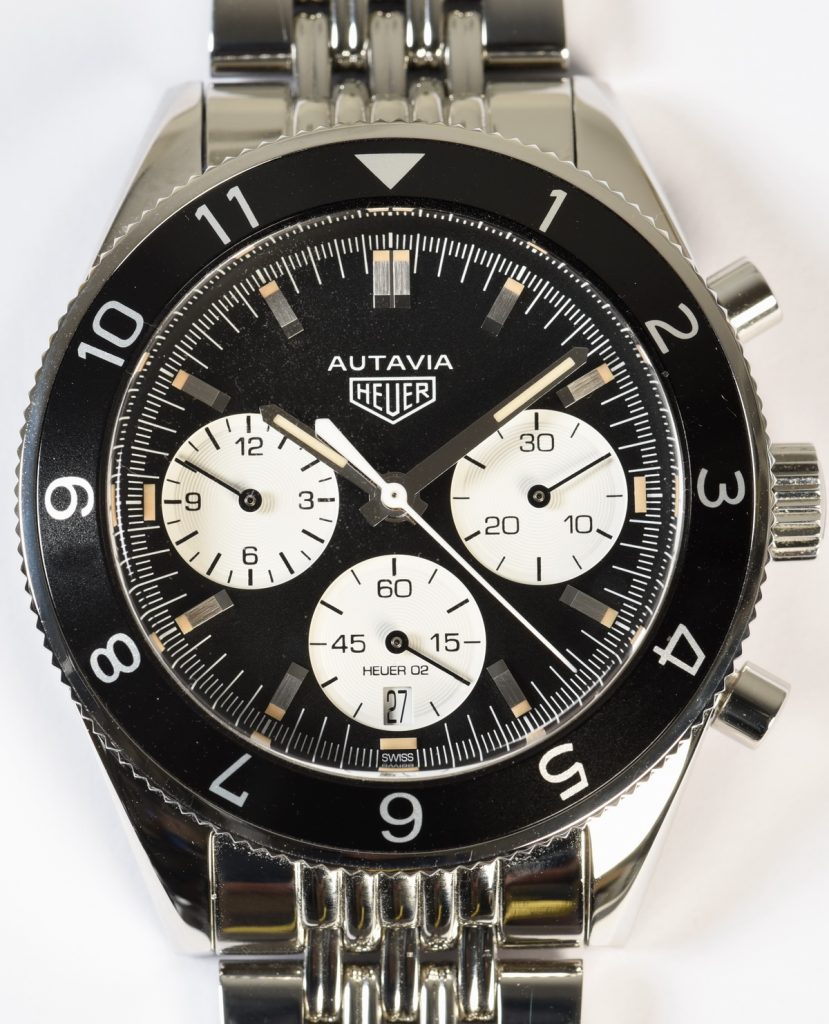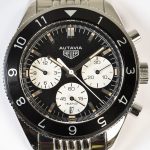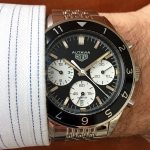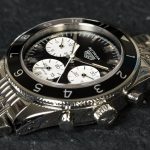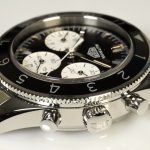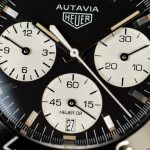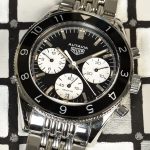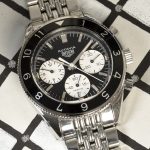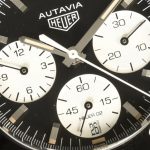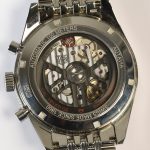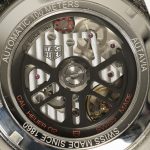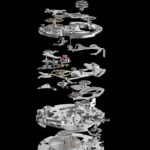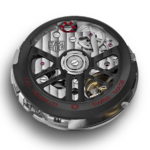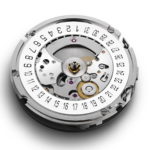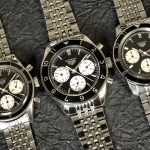TAG Heuer introduced its new Autavia in March 2017, at Baselworld, and the watch is now available worldwide through TAG Heuer dealers. I purchased my new Autavia in May, and have provided my impressions of the watch — through the first eight days on the wrist — in an interview with Stephen Pulvirent, which has been published on Hodinkee. The posting below offers some basic information about the new Autavia, as well as some “live” photos from my first month with the watch.
Origins
Heuer introduced its first Autavia chronograph in 1962, and over the period until its introduction of automatic Autavias (in 1969) the model used a traditional round case with a manual-winding movement. With the shift to automatic Autavias in the 1970s, a C-shaped case replaced the round cases and production of these larger Autavias continued until the mid-1980s.
In 2016, TAG Heuer announced that it would re-issue the Autavia in 2017, and took an unusual approach to the selection of the watch that would inspire the newest member of the TAG Heuer line-up. Jean-Claude Biver declared that the enthusiasts could select the watch that would provide the basis for the new Autavia, subject to only two conditions — First, the new Autavia would use a traditional round case, from the 1960s, rather than a C-shaped case from the 1970s. Second, the new Autavia would be a modern size, say 42 millimeters, rather than the smaller size of the 1960s Autavias. Within these parameters, collectors and enthusiasts would select the model to inspire the new Autavia.
The Autavia Cup
TAG Heuer used a dedicated website and social media to stage a head-to-head competition between 16 vintage models, to select the 1960s Autavia that would be the style-guide for the new Autavia. With over 50,000 votes cast in three rounds of matches, in April 2016, TAG Heuer announced that the “Rindt” version of the Reference 2446 Autavia (circa 1967) had won the competition.
The Prototypes and Introduction at Baselworld 2017
TAG Heuer showed two prototypes of the new Autavia. The world saw the first protoype at the Heuer Collectors Summit, in September 2016.
TAG Heuer showed the second prototype of the new Autavia in January 2017, in Geneva, and the new Autavia was introduced at the 2017 Baselworld show, in late March 2017. Read about the launch of the new Autavia HERE.
Overview of the New Autavia
The new Autavia is a three-register automatic chronograph, with a black dial and and white registers. The first watch to be powered by TAG Heuer’s new “Heuer 02” movement, the dial uses a tri-compax layout, with the chronograph hour recorder at 9 o’clock and the minute recorder at 3 o’clock, with running seconds and the date at 6 o’clock. The Heuer 02 beats at 28,800 VPH, and offers 80 hour power reserve.
The Autavia is offered either on a grains of rice bracelet, in stainless steel, or on a brown calfskin strap.
Dial and Hands
Following the style of its “Rindt” predecessor, the new Autavia has a black dial with bright white registers. The applied metal markers are rhodium-plated, with a brushed finish on the top surfaces and an aged look to the super luminova applied at the ends of each marker. The bright white recorders have a azurage finish, tightly-spaced concentric circles that add texture to the dial. The time-of-day hands are also rhodium-plated, with a polished finish and aged lume to match the markers.
The new Autavia uses a 3-6-9 layout for the registers, sometimes called a “tri-compax” layout. Chronograph hours are at 9 o’clock; chronograph minutes are at 3 o’clock; running seconds are displayed (with the date window) at 6 o’clock. The Autavia uses a white, center-mounted chronograph seconds hand. In an unusual break from the vintage models (and most modern models), the chronograph minutes recorder is marked in 2-1/2 minute increments, rather than one-minute increments. So there are hash-marks for zero, 2-1/2 minutes, 5 minutes, 7-1/2 minutes, 10 minutes, etc., but there are no marks for 2 minutes, 3 minutes, 4 minutes, 6 minutes, 7 minutes, etc. Eighteen times out of 30, the user of the chronograph is often left to determine the elapsed minutes by reference to the nearest hash-mark.
Consistent with the vintage Autavias of the 1960s, we see “Autavia” printed in white above the Heuer shield. In a new approach, “Heuer 02” is printed in black on the running seconds recorder, evidencing TAG Heuer’s pride in this Autavia being the “launch model” for its new in-house movement.
The Case
The new Autavia employs a 42 millimeter round case, inspired by the Rindt model from the 1960s, but also incorporating certain elements from other Autavias from the 1960s. While certain elements are derived from the “Rindt” Autavia, the overall look of the new Autavia is closest to the Autavia Reference 2446C, a snap-back model, in a compressor case, introduced circa 1968. The 2446C measures 40.5 millimeters across the dial, with a relatively wide bezel. Consistent with the “Rindt” model from the 1960s, the lugs have three distinct surfaces (side and top surfaces, as well as a chamfer between them).
The crown is knurled, and marked with the “Heuer” shield. The simple capped pushers conform to the style and construction of the 1960s Autavias.
The new Autavia has a bi-directional rotating bezel (meaning that you can turn it clockwise or counter-clockwise), with 60 clicks to a full rotation of the bezel. The bezel is marked for hours, so that it can be set to time elapsed hours or to track the time in a second time zone. The edge of the bezel is knurled, with a diagonal cut, the same style used on the Rindt Autavia.
The new Autavia has a domed sapphire crystal, with double anti-reflective treatment, with the case-back also incorporating a sapphire crystal.
The Movement
The new Autavia is the first model to be powered by TAG Heuer’s new in-house movement, the “Heuer 02” movement. As may be fitting for a chronograph movement, there were several starts, stops and resets before the Heuer 02 movement found its first home in the new Autavia. For the history nuts, we recap timeline from the first mention of this movement almost five years ago until the launch of the new movement.
TAG Heuer introduced the Calibre 1887 movement in 2010, and by 2012 there were rumors of a new companion movement, code-named the “Calibre 1888”. This new movement would be developed and built by TAG Heuer at a new facility, in Chavenez, and whereas the Calibre 1887 was based on technology previous developed by a third party, TAG Heuer would draw the new movement on a “white board”. In late 2013, the new movement — now called the “Calibre 1969” — was used in a limited edition Carrera, cased in titanium and rose gold. The movement next appeared at the 2014 Baselworld show, powering a stainless steel Carrera, and renamed the “CH80”. The new CH80 movement was soon put on the shelf, however, with TAG Heuer focusing its efforts on production of the Calibre 1887 movement.
Most important for the vintage enthusiasts, the Heuer 02 movement features a traditional 3-6-9 layout of the registers. Beginning in the 1940s, this was the traditional layout for three-register chronographs, so TAG Heuer now has the ability to create re-issues of its classic three-register chronographs, using the Heuer 02 in-house movement. In a variation from the usual placement of the vintage models, the chronograph recorders are at 3 o’clock (minutes) and 9 o’clock (hours), with running seconds at 6 o’clock.
From the technical perspective, a key feature of the Heuer 02 is its vertical clutch, which replaces the oscillating pinion to engage and disengage the chronograph. The vertical clutch seeks to provide more precise starts and stops of the chronograph seconds hand, without any jiggling, and also allows the chronograph to run for an extended period of time without affecting timepiece accuracy.
Detailed Specifications
Reference Numbers
- CBE2110.FC8226 on brown calfskin strap
- CBE2110.BA0687 on stainless steel bracelet
Movement
- Heuer 02 in-house movement
- Frequency 28,800 vibrations per hour (4 hertz)
- 80-hour power reserve
- 168 components / 33 jewels
- Construction: column-wheel; circular oscillating rotor; vertical clutch
- Dimensions: diameter is 31.0 mm; height is 6.9 mm
Case
- Round, polished steel case, with curved lugs
- Dimensions: across the dial is 42 mm; thickness is 15.9 mm; lug-to-lug is 51.3 mm; 21 mm between-the-lugs (width of strap)
- Water resistant to 100 meters
- Black aluminum bezel, marked for 12 hours, bidirectional rotation, with 60 clicks per rotation
- Domed sapphire crystal with double anti-reflective treatment
- Case-back is screw-back design, with sapphire crystal, marked “Autavia”, “Swiss Made Since 1860” and “Automatic 100 Meters”.
- Knurled crown, with Heuer shield
- Polished steel pushers at two o’clock (start / stop) and four o’clock (reset)
Dial and Hands
- Black with rhodium plated applied indexes, with beige superluminova
- Date window at 6 o’clock (in running seconds recorder); quick-set
- Chronograph seconds scale marked in 1/4 second increments
- Chronograph second hand: painted in white lacquer
- Printing: white lettering for Autavia and Heuer shield (at top) and black lettering for Heuer 02 (at bottom)
- Three white recorders, with azurage finish:
- Chronograph minute recorder at 3 o’clock (marked 0 to 30, in 2.5 minute increments)
- Chronograph hour recorder at 9 o’clock (marked 0 to 12, in half hour increments)
- Running seconds at 6 o’clock (marked in 5 minute increments)
- Rhodium-plated applied markers, with polished and satin-finished top; beige SuperLuminova highlights
- Rhodium-plated beige SuperLuminova hour and minute hands
- Black varnished chronograph hands
Strap / Bracelet
- Leather strap is brown calfskin, with contrasting stitching along sides
- Stainless steel bracelet uses grains of rice design
- Dimensions: 21 mm between-the-lugs, tapering to 20mm at clasp.
Pricing
- $5,300 on stainless steel bracelet
- $5,150 on brown leather strap
Jeff Stein
June 13, 2017
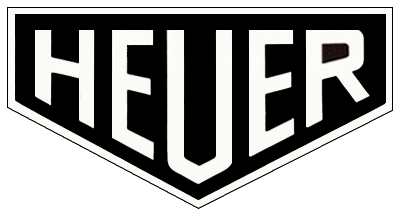
- The 16 contestants in the Autavia Cup, March 2016
